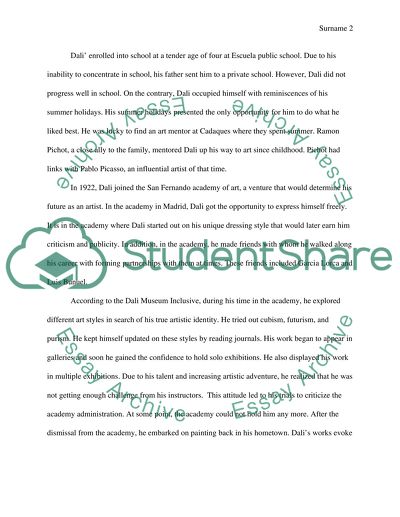Cite this document
(“Salvador Dali and his Unique Artworks Research Paper”, n.d.)
Retrieved from https://studentshare.org/visual-arts-film-studies/1397499-salvador-dali-and-his-unique-artworks
Retrieved from https://studentshare.org/visual-arts-film-studies/1397499-salvador-dali-and-his-unique-artworks
(Salvador Dali and His Unique Artworks Research Paper)
https://studentshare.org/visual-arts-film-studies/1397499-salvador-dali-and-his-unique-artworks.
https://studentshare.org/visual-arts-film-studies/1397499-salvador-dali-and-his-unique-artworks.
“Salvador Dali and His Unique Artworks Research Paper”, n.d. https://studentshare.org/visual-arts-film-studies/1397499-salvador-dali-and-his-unique-artworks.


